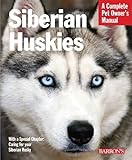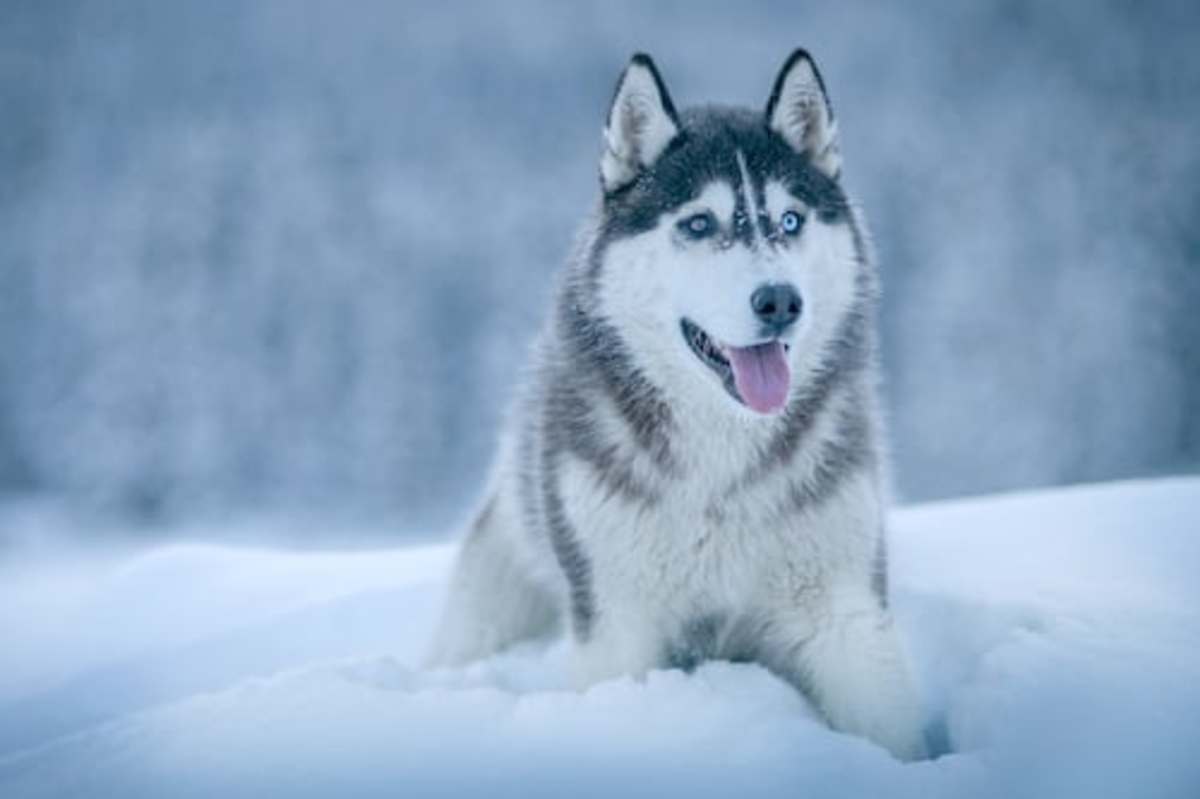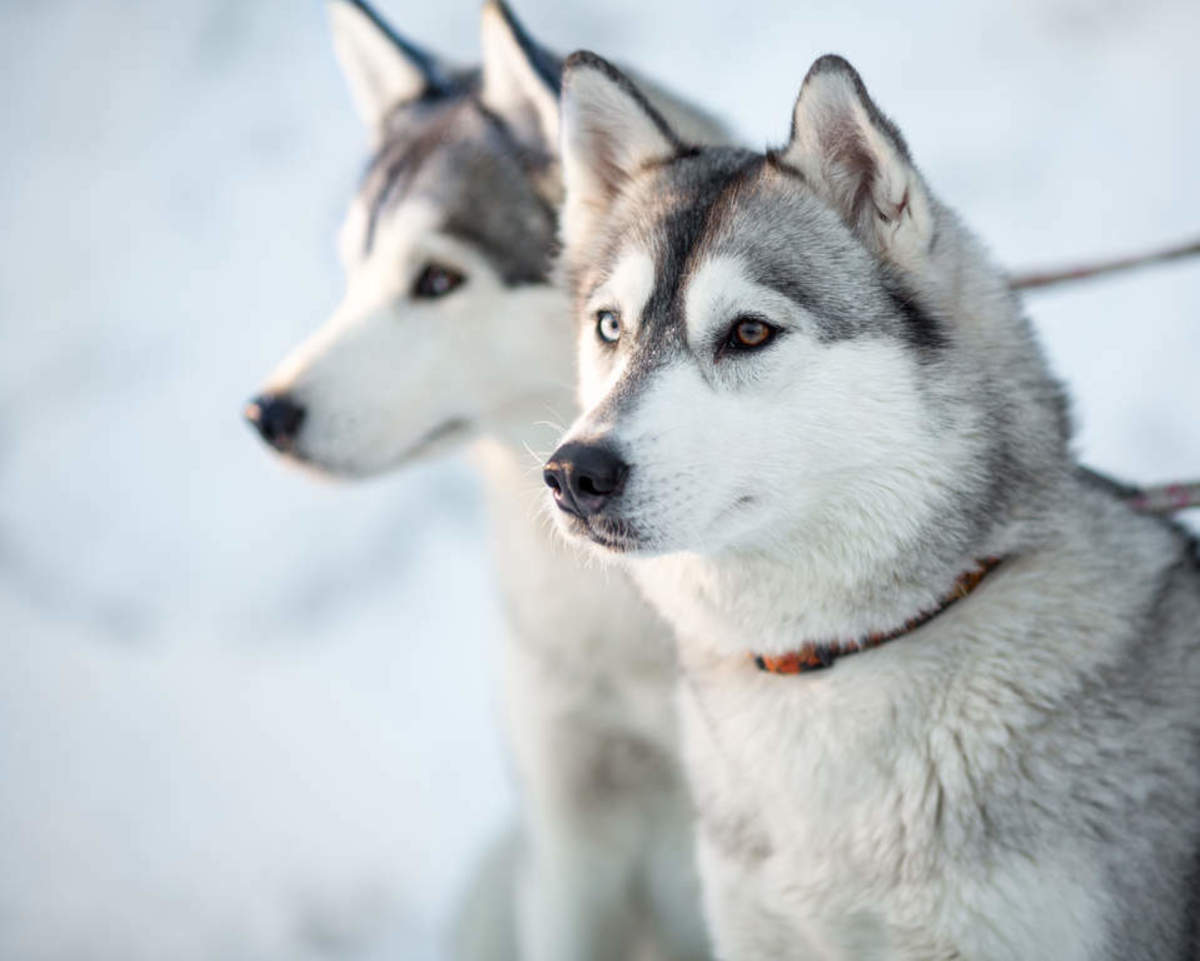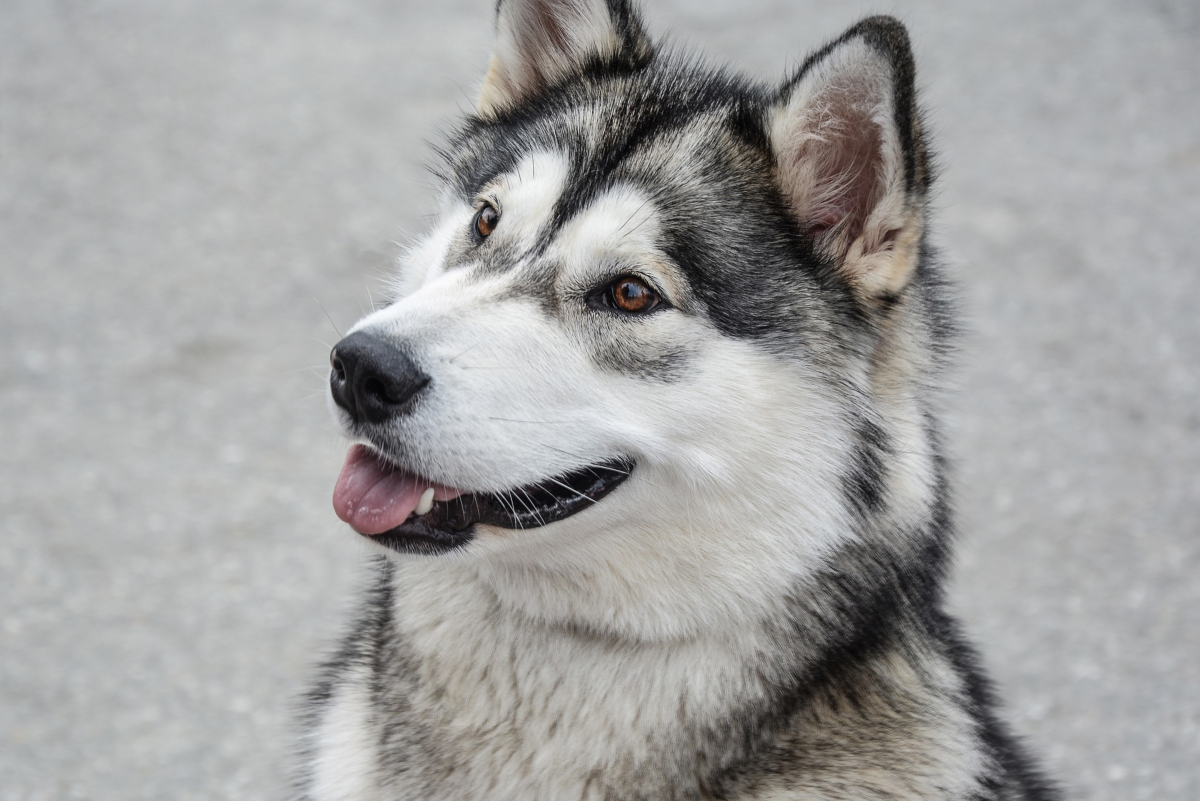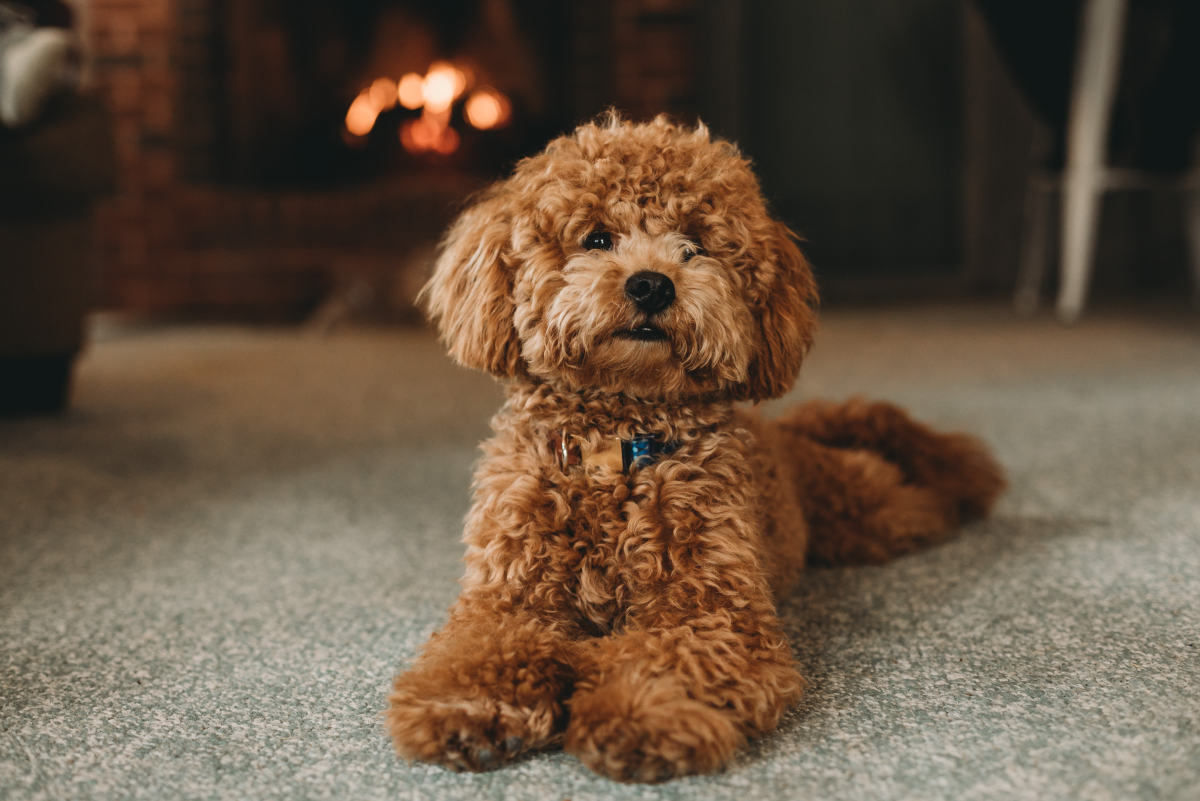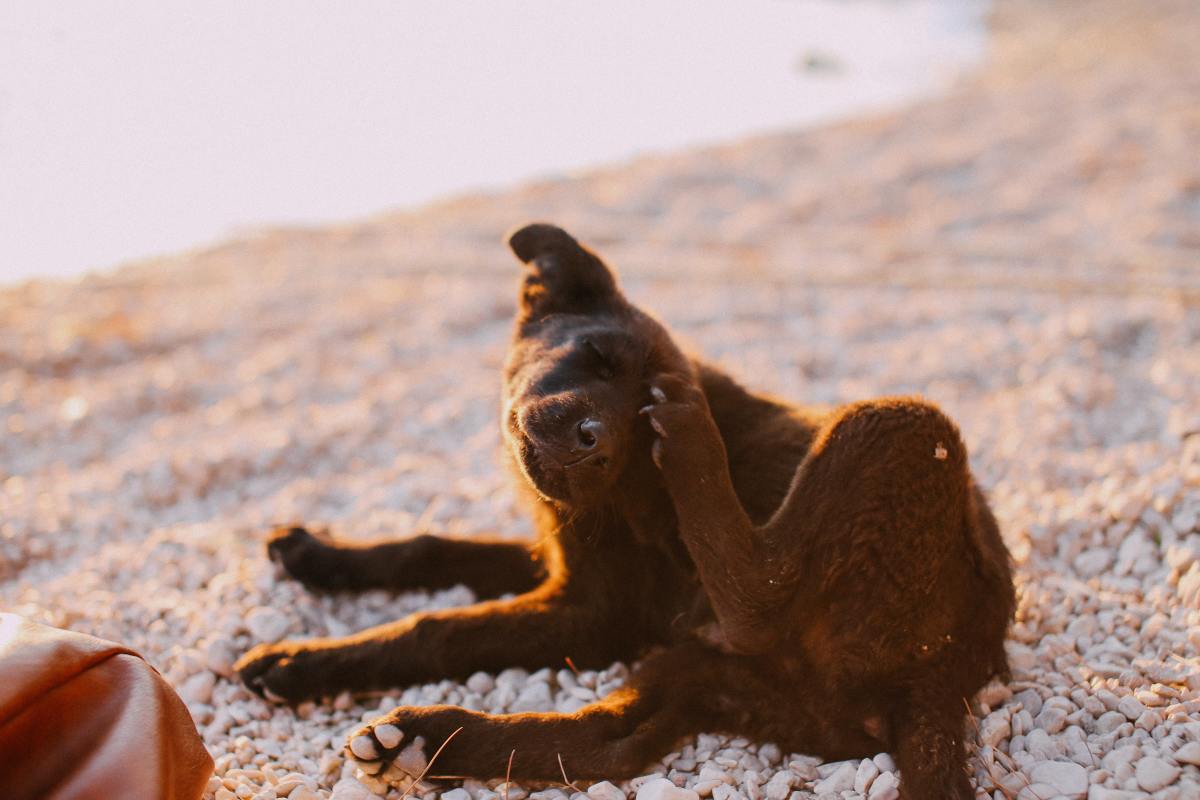Snow Dogs and Running Machines - Huskies and Malamutes
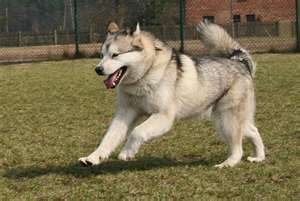
Perfect for the Snow
I will try to write mainly about those breeds I have had/had some experience with. If there is one dog that taught me a lot, it was Cora. Since I don't have any idea what she really was, I added both of these Snow Dog breeds to this article.
Both breeds share a lot of things. They are both athletes and working dogs and make a lousy couch potato unless you wear them out first. They are great for other athletes or those that love to ride bikes or have a giant yard. Hot climates are really not their thing and you should think about that before you get any winter-climate type dog. A lot of the double-coated or long-haired dogs are miserable in hot climates and it isn't fair to do that to them. The same goes for short-haired dogs and cold climates. Most sight-hounds and such will freeze to death in the northern States unless you keep them wrapped up super warm and their outside time short in the winter. That's why it is so important to think about yourself first before you get any dog. What is it that you can and cannot do!? What dog fits your lifestyle!?
My main reason for growing up favoring Shepherds and Huskies/Malamutes was their likeness to their ancestors. And Cora taught me that this likeness wasn't just physically, but mentally too!
The Siberian Husky
The Chukchi and their close relatives developed in over 3,000 years a breed of dog that would play a big part in their lives and their culture. Their dogs were survival tools in a Siberia that knew temperatures beyond our expectations of 'freezing cold' and regular ice-cold winds of over 100 mph. They would use their dogs, 20 or more at the time, and cover large distances to go ice-fishing or hunting. And with the scarce food sources these dogs had to survive on practically nothing. This shows even today when in long-distance races the Siberian Husky need only half the food of what their Alaskan cousins need!
It seems that Indians have a greater appreciation for life and respect those creatures that help them in many ways. The Siberian Huskies had a great influence on both their religion and their daily life. Dogs were a priced possession and the best belonged to the richest; making them rich because of their skills; ...their simple existence!
Their religion circled around stories of two Huskies guarding the gate of heaven and turning away anybody that showed cruelty to a dog. Another story tells of a time when famine killed both humans and dogs and two pups were kept alive by a woman to ensure their survival.
The women played a vital role in the raising and selection of the best dogs; while the men were responsible for training. These dogs, despite tight selection processes, where family dogs and guardians of their children. They were kept inside when it got cold and temperatures were measured in how many dogs it took to keep warm (PLEASE DON'T TELL MY DOGS THAT! MY BED IS FULL ENOUGH!). And those dogs not selected for breeding where not thrown out. Due to their sweeter temperament (HEAR THAT!?) they were selected for use as sled dogs. A fight between the dogs could leave a man stranded miles away from home and on the ice. Their 'sweeter' disposition made a neutered dog perfect!
When the Czarist troops attempted to widen their fur trade, these dogs became life-savers once again. By outrunning the soldiers reindeer 'cavalry', they allowed their masters to evade the soldiers. Their masters, no cowards themselves, finally established their position by attacking a much better armed Russian Army and forced the signing of a treaty to gain their independence.
Sadly, less than a hundred years later, the free trade between the Soviets and the Chukchi brought a turn for the worst; smallpox! Those not killed by the disease faced other hardships. Knowing the importance of the dogs, the tribal leaders and breeders of the dogs were killed. The Soviets succeeded in replacing the once so amazing Siberian Huskies with their own, much larger bloodlines and the original Siberian Huskies were almost extinct. In typical Soviet way a official proclamation declared that they had never existed!
The Alaskan Cousin
Before they were declared 'non-existent', the fame of the original Siberian Huskies had made it across oceans. At the turn of the 20th century the World was watching the news about Polar Expeditions from their warm homes. Adventure seekers were visiting the annual Markova Fair held on the Siberian Peninsula to trade with the visiting tribes. The dogs coming from tribes such as the Chukchi and the Koryak shaped the excellent Huskies.
The first team to gain fame elsewhere was Gdosak's team he raced in the All Alaskan Sweepstakes. This race, 408 miles long, had just started the year prior when he competed in 1909. The Russian fur trader was well prepared for the challenge. Despite the fact that his smaller Siberians were belittled as 'Siberian Rats', he managed to convince a gentleman named Thurstrup to take on the team. In April of 1909 a team of Siberian Huskies started a new part of history in the dog world, when they pulled their sled out of Nome, Alaska! Despite Thurstrup's inadequate driving skills he still managed to finish Third. Inspired by their mightiness in those 'little' bodies, a young Scot with the name of Fox Maule Ramsey imported three teams for the upcoming race. The 'Siberian Rats' finished First, Second and Fourth in the 1910 All Alaska Sweepstakes!
" The legendary John "Iron Man" Johnson team finished first in this 1910 race was driven by , who completed the race in 74 hours, 14 minutes, 37 seconds. This time was never equaled, even when the race was rerun within the last decade with the benefit of modern equipment, better nutrition, and supposedly more specialized hybrid "race dogs:'... "
The 'Siberian Rats' were eventually purchased by Jafet Lindenberg in 1914 and mend to be a gift to Captain Amundsen for his planned expedition to the North Pole. But World War I changed those plans. Despite some setbacks, the dog's caretaker Leonhard Seppala, a Norwegian Arctic Fisherman and multi-talent eventually succeeded with his dogs in winning the Sweepstakes three times in a row.
He would become a legend when in 1925 Nome was hit by a outbreak of diphtheria. Seppala, his famous lead dog Togo, and his team of once belittled Siberians would finish the 'Serum Run' against death and transport the life-saving medication over 340 miles far back to Nome!
This act would inspire such movies as 'Balto' and many others. But one other thing became much more important to Seppala, 'the little man with his little dogs': He became a legend for his devotion to his dogs!
Seppala's dogs would eventually perform against many others and spread the fame of the Siberians across a continent; inspiring their use in many expeditions.
The gold rush in Alaska furthered the spread of the Siberian Huskies; often the only transportation available in the rough wilderness.
Seppala's dogs inspired another 'change' in dog history: The creation of the Alaskan Huskies. These dogs are more of type of dog, rather than a breed. They are chosen for their specialization, such as the Malamute and the Mackenzie River Huskies and their use as 'freighting dogs'. Others were 'sprint Alaskans' such as the Eurohound and those bred for distance.
Alaskans are often chosen for sled dog races. Their sheer speed is impressive. Having often been mixed with gun dogs and Hounds, they can reach average speeds of 19 mph (30 km/h) or more. They are a typical American creation: Mixed of several foreign influences and a genius at survival!
The Malamute
The Malamutes are the muscles between the snow dogs. They were mend to carry or pull large loads over longer distances.
Once again a very 'useful' dog goes back to a native/indigenous heritage!
The Mahlemut tribe of the Inuit valued their dogs as much as their Siberian counterparts. Dogs were respected for what they did for their daily survival and comfort. They were 'utility' dogs; used for working, to hunt and to live as part of their family. Their relationship with their 'masters' allowed both to flourish in the often hostility above the Arctic Circle.
They are believed to be one of the first breeds to have been domesticated. The Inuits were skilled hunters of sea animals they hunted from their boats. Dogs were their main source of transportation. Rather than tying the dogs in pairs behind each other, they chose to use a tandem formation where the dogs were tied side-by-side. Their sleds were made out of wood, the 'baleen' from whale's mouth, frozen fish or animal bones. Inuits had a amazing skill to navigate by the often rare landmarks. If landmarks weren't available, they left their own!
The Inuits had a very similar relationship to their dogs than their Siberian counterparts. During the summer the dogs were pack animals with the ability to carry/drag up to 20K. In the winter they were used to pull the sleds. They were used both as hunting dogs and to keep all to friendly polar bears at bay. They were also excellent guard dogs, alerting to any intruder; human or otherwise.
Inuits bred both for quality and for 'looks'. The most handsome and striking dogs were chosen; especially those with healthy coats and bright, shiny eyes. Malamutes weren't the only dogs used. Other breeds were the Canadian Eskimo dog, the Siberian Husky and the Greenland Dog. Each newborn pup would be welcomed with the performance of rituals that were mend to increase their strength, stamina and sense of smell.
They became a valuable part of the Klondike Gold Rush that overcame Alaska in 1896. These dogs could pull heavy lots and needed survive on less food than a lot of other breeds. A good Malamute could cost a prospector as much as $500. Their value as method to haul freight in both summer and winter months was rarely matched.
The U.S. postal service made use of their strength and ability from roughly 1890 to 1963. They could access remote locations both in the U.S. and Canada even in the toughest weather. But between 1910 and 1930 they started to be replaced by aircraft and the last musher and his dogs retired in 1963.
They continued to prove themselves, tough. Word War II saw them pulling sleds in those areas rough on soldiers, but a home for these snow-loving dogs. They moved everything from weapons to ammunition and even worked as search and rescue dogs.
Many expeditions made use of these all-around talents and Malamutes have seen places most of us would consider way too cold. They helped to explore and map Alaska's Arctic coast and create the Arctic National Wildlife Refuge. Admiral Richard Byrd took Malamutes as far as the Antarctica and they aided his expeditions from roughly 1930 to 1950.
Today they are still used by both the Inuits and those conducting expeditions in such remote areas where human technology is finding its limits.
Despite breeding with other dogs to make them even better, DNA tests have shown that these attempts had no damaging affect on one of the oldest breeds of dogs; also very much genetically distinct from most other dog breeds.
The Iditarod
It is controversial!
I personally am totally against those that use inhumane methods to force their dogs to go above what they are capable of giving.
I do respect those that will rather give up a race than hurt their dogs!
I also know how much Huskies and Malamutes love running. My two Mixes would how and bark in excitement when we take the truck out to one of Germany's beautiful public bush roads. They would fly of the truck as fast as I could get them off and all you saw was dust clouds going down the road ahead of us. All we could do was follow!
Cora especially had this love for running and freedom. I paid a ton of money to get her out of different animal shelters when the mood struck her! Her record were almost 50 miles in a little over a day! And yes, she did it on foot! She was seen numerous times, but didn't let them catch her!
Dog-sleds always fascinated me. I used to have the Shepherds of my neighbor pull me on a old wooden children's sled. They would run forever against each other. In the summer we would take the bike and I had three German Shepherds race each other down endless roads in the woods.
The Iditarod is not just for fun. Dogs had been pulling sleds for years and years to transport goods and often life-saving medications.
Two short races on that same trail were held in 1967 and 1969. But Dorothy G. Page, a Alaskan lady with deep interest into dog teams and their ability to travel where cars couldn't, wanted more. She was impressed with what dog teams had accomplished; all the way from the 1920s and the Alaskan gold strike that attracted settlers to the wilderness to the day to day work these teams did.
These people started leaving the foot- and paw-prints that would make up the trail. Transporting everything from mail to supplies to people; bring priests, judges and ministers to the villages deep into the wilderness.
But eventually the gold disappeared and airplanes replaced dogs. The discovery of the snow mobile put an end to the commercial use of dog teams to cover long distances!
The Iditarod Trail was blown over by snow and by the 60s hardly anybody know what it had been and what the accomplishment of the dog teams had been.
Mrs. Page felt that it was important to raise awareness to the Trail and the dog teams that had helped shape Alaska's history. She presented the idea to Joe Redington, Sr., a musher from the area near Knik. Soon they began promoting the idea and several groups including the Aurora Dog Mushers Club helped clear the now overgrown trail. The first two races attracted contestants from all over Alaska and even Massachusetts.
The plans to extend the race all the way to the now ghost town that named the trail had to be changed. The U.S. Army reopened the trail to use as an area to conduct winter exercises. Instead the race was to lead to Nome. And in 1973 the first Iditarod race went on its way!
Of all the contestants, twenty-two finished in 1973; eventually followed by over 400 others. It now is no longer made up of strictly Alaskan teams. Instead mushers from Germany, Switzerland, Canada, France, Czechoslovakia, Great Britain, Norway, Austria, Italy, Sweden, Japan and even the Soviet Union came all the way to Alaska. So did mushers from over 20 States across the U.S..
Originally the race had started at Seward. Since 1983 the race starts in Anchorage and teams leave at 2 min intervals. At the average 65 teams are competing against each other. The average length of the race is 9-12 days. The first non-American to win the race was Dough Swingley in 1995, completing in 9 days and almost three hours.
The History of the Husky
- Husky History
The Siberian Husky was developed over a period of around 3,000 years by the Chukchi and related peoples of Siberia, the breed was developed to fulfill a particular need of the Chukchi life and culture. In one of the most inhospitable climates in...
The Siberian Husky
- Siberian Husky - Wikipedia, the free encyclopedia
The Siberian Husky (Russian: Сибирский хаски, Sibirskiy haski, "Siberian husky") is a medium-size, dense-coat working dog breed that originated in north-eastern Siberia. The breed belongs to the Spitz genetic family. It is recognisable by its...
The Alaskan Husky?
- Bancroft, Ontario - The History of The Alaskan Husky
Guided tours of Algonquin Park & area! Explore the wilderness with us - by HORSEBACK, DOGTEAM, or SNOWMOBILE - four seasons of fun for the whole family! Affordable packages - OPEN ALL YEAR!
More about the Alaskan Husky
- Alaskan Husky - Wikipedia, the free encyclopedia
The Alaskan husky is not a breed of dog rather it is a type or a category. It falls short of being a breed in that there is no preferred type of and no restriction as to ancestry; it is defined only by its purpose, which is that of a highly...
The Alaskan Malamute
- Alaskan Malamute - Wikipedia, the free encyclopedia
The Alaskan Malamute is a generally large breed of domestic dog (Canis lupus familiaris) originally bred for use as a utilitarian dog and later an Alaskan sled dog. They are sometimes mistaken for a Siberian Husky due to color and markings, but in...
Malamutes and Expeditions
- Alaskan Arctic Expeditions - Malamute History
The Alaskan Malamute originated at least four-thousand years ago with a group of Eskimos called Mahlemuit Inuits. Malamutes were probably among the first breeds to be domesticated. Their reputation for great strength, courage, endurance, and...
The History of the Iditarod
- Iditarod | Last Great Race on Earth®
Iditarod History The Beginning. The Iditarod Trail Sled Dog Race first ran to Nome in 1973, after two short races on part of the Iditarod Trail in 1967 and 1969.
Adopt, don't buy! Find a Husky on Petfinder.com
- Adopt a Siberian Husky | Dog Breeds | Petfinder
The Siberian Husky Dog Breed: Fun-loving, adventurous, alert, independent, clever, stubborn, mischievous and obstinate, all describe the Siberian husky. This breed ...
Adopt, don't buy! Find a Malamute on Petfinder.com
- Adopt an Alaskan Malamute | Dog Breeds | Petfinder
The Alaskan Malamute Dog Breed: The Alaskan malamute is powerful, independent, strong-willed and fun-loving. She loves to run and roam. She is family-oriented, and as ...
Rod Perry - First Hand History of the Iditarod
Trail Breakers Vol. 1
- Amazon.com: TrailBreakers (9780982373002): Rod Perry: Books
Amazon.com: TrailBreakers (9780982373002): Rod Perry: Books
Trailbreakers Vol. 2
- Amazon.com: Trailbreakers, Vol. 2: The Most Daring Iditarod Adventure of All Time- founding the Last
Amazon.com: Trailbreakers, Vol. 2: The Most Daring Iditarod Adventure of All Time- founding the Last Great Race on Earth (9780982373019): Rod Perry: Books

